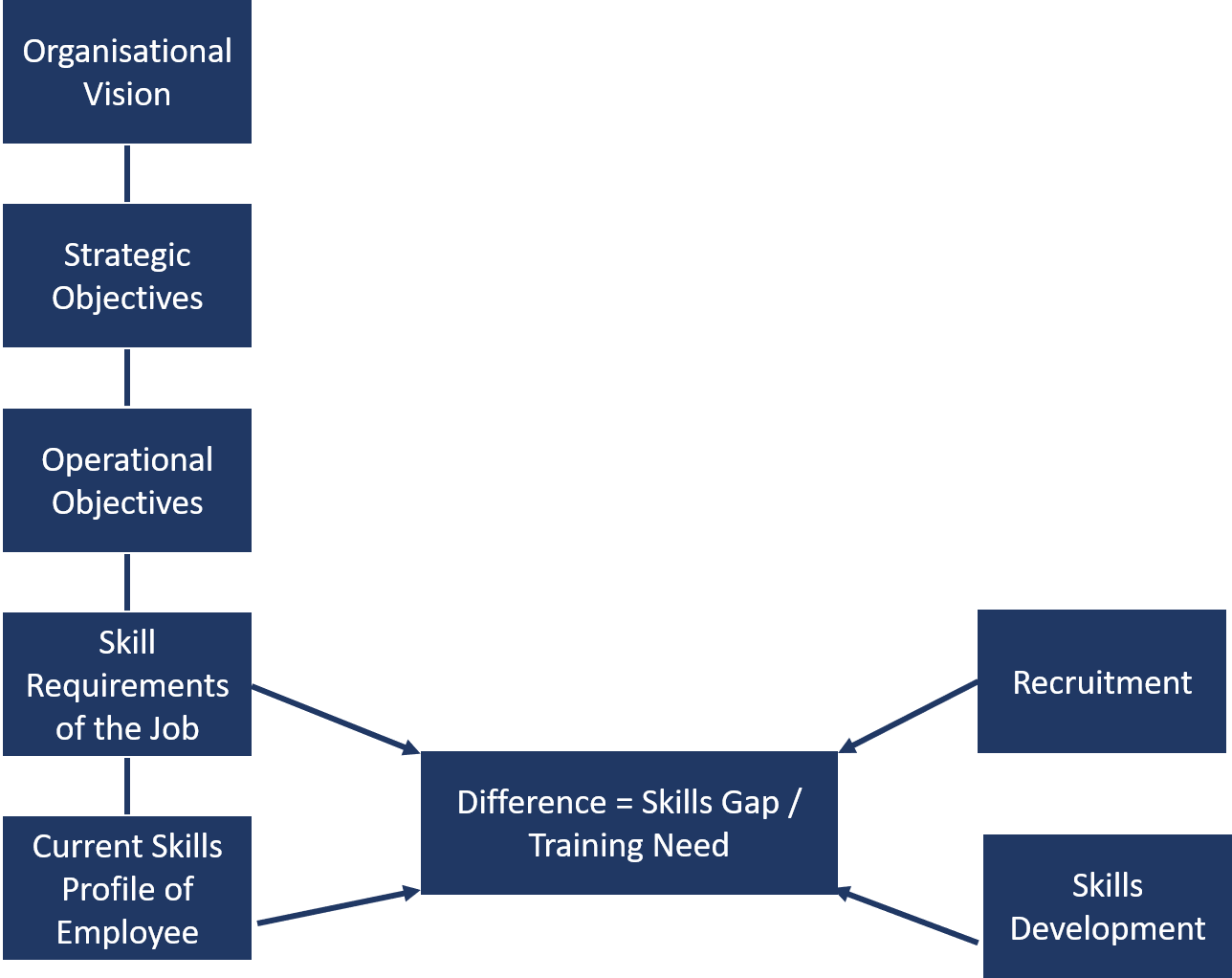
Organisations exist for the purpose to deliver some products or services to customers/clients. They use certain inputs for example people, money, etc. and transform them into products and services by means of a process. The products and services are the “outputs” of the organisation. Employees must have the knowledge and skills to transform the inputs into outputs. The HR section of any business is responsible for this function.
If employees are able to perform their tasks, it will contribute to the achievement of the organisational objectives. Organisations usually try recruit employees who already have the required skills to perform their tasks. Some employees may however not have the required skills and knowledge when they are appointed. These employees will need training.
Because tasks and technology sometimes change, existing employees may also need new skills and knowledge which the organisation did not require when they were appointed. Such employees will need training.
When organisations train and develop their employees, they develop the skills of employees.
This process is illustrated as follows:

But what is skills development? The process of skills development is that the skills and knowledge of employees are developed in order to ensure that they can perform optimally in their jobs and in doing so assist the organisation to achieve its strategic objectives.
Skills Development Terminology
|
Terminology |
Explanation or definition |
|
Skills |
Competencies (skills and knowledge) |
|
Interventions (training and development) |
Course, learning programmes, skills programmes, skills development, learner ships, etc. |
|
Employer |
An organisation that is registered for skills levy purposes with SARS and that is registered with a SETA for skills development purposes. |
|
Skills development facilitator (SDF) |
The person appointed to plan, manage and report on skills development activities of an organisation. |
|
Workplace Skills Plan (WSP) |
Training plan. |
|
Annual Training Report ( |
Training and development report. |
|
Skills profile |
The ‘characteristics’ of employees in term of skills and knowledge (competencies) i.e. the skills and knowledge that employees have. |
|
Skills audit |
The process whereby someone identifies the organisation skills requirements (i.e. what skills are needed) and the actual skills profile (i.e. what do employees really have). |
|
Sector |
Economic areas such as chemical, safety, construction, etc. |